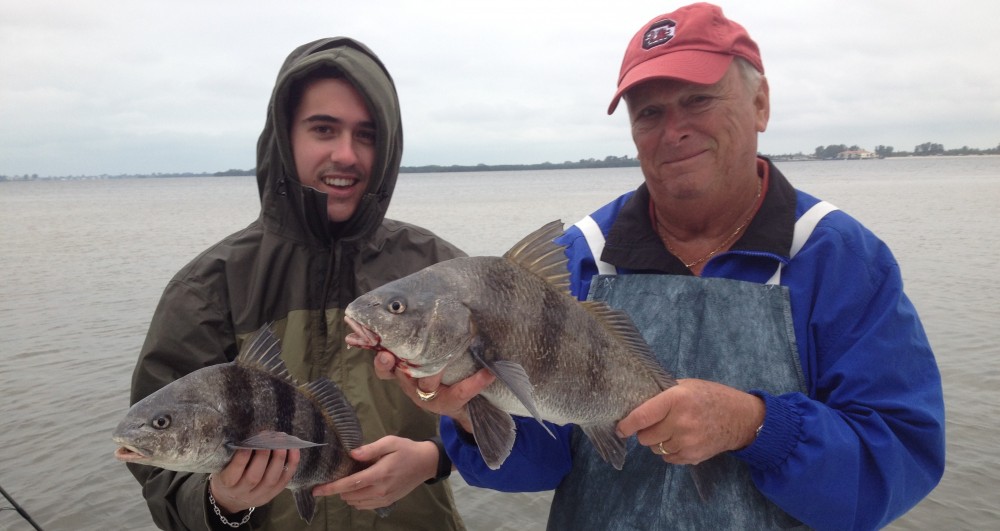Warm waters means hot Anna Maria fishing
Springtime fishing around Anna Maria Island is living up to its reputation. Warmer waters and light breezes are providing some of the best fishing our region has to offer. Whether fishing with live shrimp or love shiners as bait there are fish to be caught. Artificials such as soft plastics and topwater plugs are also producing sizzling action.
The tail end of the sheepshead bite is occurring so if you haven’t had your fill, you can still get out and catch a few. On the reefs, I’m catching fish exceeding 7 pound by using live shrimp on a knocker rig. Don’t be surprised to encounter mangrove snapper and Key West grunts too. The local piers and residential docks are also holding schooling sheepshead in great numbers.
Snook are moving onto the flats with a presence. The days of catching over 30 fish on a 4-hour excursion on the flats are back. Live shiners, free-lined or fished under a cork are top producers for these hungry linesiders. Keeper fish are available, although a majority of the fish I’m pulling over the gun whale are between 22-26 inches. F you lip your snook when you land them, prepare to have a worn out spot on your thumb.
I’m still finding pompano along the sandy beaches of Anna Maria Island, especially around the passes. Small pink jigs tipped with a piece of fresh-cut shrimp are my go-to bait when targeting pomps. These jigs will also attract a number of other species including whiting, sheepshead, black drum, mackerel, jacks and ladyfish. Not a bad mix for using one lure.
Spotted seatrout are also coming out of the woodwork as our water temps rise. Free-lined shiners cast out in areas where deep grass meets a channel or potholes are producing limits of specks. Most are in the slot, although over-slot fish are becoming less uncommon as the season stretches on.
Finally, redfish are being spotted throughout our region. All sizes are being caught on live shiners or artificials such as gold spoons or Berkley Gulp! Shrimp. Look for schooling fish along mangrove shorelines during high tides.

